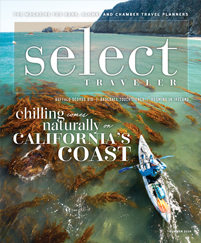
When bank loyalty programs first blossomed decades ago, membership requirements were varied throughout the country. Some programs, perhaps most, attached age requirements of 55, 60 or 65.
With many middle-aged baby boomers uncomfortable with any of the aforementioned ages just over the horizon, the debate began of what defines a senior citizen. But one thing was for sure: Back in the day, all bank clubs were senior programs.
When it came to how much money a potential member needed to have in the bank, some banks required as much as $100,000, but a few requested that a member need have as little as $100 in a checking account. Banks had mandatory asterisks by all sorts of financial services — checking, savings, certificates of deposits, loans — that were required in order to be a member of their loyalty programs.
It was an affluent, economic period in American history, and although the details varied widely, one more thing was for sure: Back in the day, all bank clubs had financial requirements for membership.
Sign of the times
Today, those common denominators for bank club membership no longer apply. Most obvious is that the requirements, if there are any, have loosened.
The Texas Travelers at Texas First Bank in Texas City, Texas, with no deposit or age requirements, represents a growing number of bank groups.
“Anyone with an account at our bank can travel with us, and in fact, anyone can travel with us at least once. We feel this is the best way to attract new customers, and our travels are not restricted to please a certain age groups’ needs and necessities,” said director Linda Holm. “In our southernmost location, we have few day trip opportunities, and we’ve lost many of our long-distance travelers through relocation or death. We need to attract as many travelers as we can.”
Holm admitted that the original focus of Texas Travelers has changed. “While we were once considered a service for customers, now we see our club as a shining star when it comes to public relations,” she said. “And because we were having trouble filling the motorcoach with just bank customers, this policy allows us to have a successful program that offers at least five extended trips a year.”
With such a wide-open policy for potential travelers, Holm said that her biggest problem is advertising. “Because we do encourage any bank member and even community residents to travel, getting the word out about upcoming trips is a problem and one that I’m currently trying to improve.”
Other bank groups with loosened requirements claim a variety of reasons for their open-door policies. Like Holm, many directors state that opening the door to the community results in increased bank business.
Many also have concerns about competitive travel groups in the neighborhood that have no requirements to travel, such as senior and recreation centers, professional groups and even travel agencies. Others claim that in these economic times, having a hefty financial requirement would severely limit potential members.
A different point of view
The First State Bank Vista Club in Mendota, Illinois, with an age requirement of 50 and any combination of deposits that totals $5,000, can be described as fairly strict in this day and age. And this policy, according to director Cheryl Thorne, has made for an extremely successful club.
“We never have less than 50 people on an international trip, and in fact, we’ve got 83 members so far signed up for an upcoming trip to Italy. We limit the amount of guests to one per member because our trips do sell out, and our members are our first priority,” she said.
Thorne and her supportive management firmly believe in having a financial requirement. “It helps create the feeling of exclusivity in a club, and we try to fulfill those dreams of exclusivity with top-notch travel,” Thorne said.
“We seldom combine with any other groups on a tour so we can set the rules when we’re far from home. Do you want to spontaneously go off the beaten path and see a certain attraction? OK. Do you want the afternoon free? OK.
“We don’t have to worry about pleasing other people. In that way, our trips reflect the values of an actual vacation rather than tours.
“We offer many other benefits: just to name a few, a free box of checks every year, free copies, and discounted and bank-escorted preplanned excursions on day trips, domestic trips and international travel. We know we have that exclusivity we strive for.
“If you have no rules, where does the bank loyalty come in? We consider the Vista Club a thank-you to those customers with $5,000 in deposits. They could have chosen any bank.”
Thorne also believes that the fairly low age requirement of 50 is just right. “We catch people just before retirement. And being able to offer activities like zip lining and fishing in the Bering Sea with this younger group, it gives a whole different look to group travel,” she said.
Personalized decisions
Although requirements for bank deposits seem to vary widely today, the trend in age requirements for club membership is that there is none or that it has been lowered to at least 50.
Thorne, a zip lining lover herself, summed it up. “Not long ago, while sitting with a new 50-year-old club member during a meeting, it was apparent he was stunned when he learned what our club was all about. He said that we had completely blown his stodgy image about group travel. He had this idea that we were all attached with mitten clips, offered no free time and did boring things.
“Now, he claims he can’t imagine traveling any other way — it’s the first time in his life he’s been able to enjoy the scenery because he’s not at the wheel. This is exactly what we want to hear from younger people who have many traveling years ahead of them.
“It was music to my ears,” she said.
Ultimately, requirements to join bank groups are different because bank groups are different, not only geographically but socially, culturally and economically. Individual directors need to assess their own needs and potential, and set or not set conditions that are conducive to the vitality and growth of their club.









